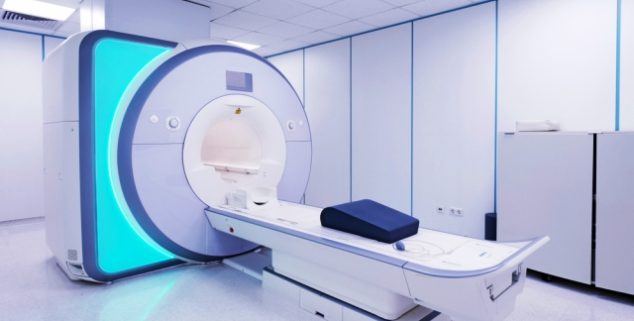Opinion
Lessons learned from failure of medical ‘right to repair’ bill
 A hospital's Magnetic Resonance Imaging, or MRI. machine. (Photo: KaliAntye, via Shutterstock)
A hospital's Magnetic Resonance Imaging, or MRI. machine. (Photo: KaliAntye, via Shutterstock)For over a decade, I’ve had the privilege of working alongside patients from all walks of life to advocate for better healthcare through the national non-profit organization I co-founded and lead, Patients Rising.
As an organization committed to prioritizing patient access, affordability, and safety, we watched with alarm as state Legislatures across the country became the target of a coordinated campaign to weaken and roll back quality and safety frameworks that are currently in place to ensure safe and proper servicing of highly complicated and critically important medical devices, like MRI and PET scanners.
Like similar “right to repair” bills in Texas and Oklahoma, SB 605 ultimately failed precisely because its principal advocates were unable to answer these important questions.
I began my patient advocacy journey in California, where I lived for almost two decades and which still feels like home. California was also the latest target of the medical “right to repair” movement in the form of Senate Bill 605, which just weeks ago was dangerously close to passage.
Had it passed, SB 605 would have forced developers of highly complex medical devices to surrender service manuals, software information, and other proprietary materials to competing independent servicing organizations (ISO) – and anyone else with an internet connection.
What SB 605 didn’t make clear is this: What type of investments, if any, do ISOs make in technician training?
Are they required to properly source and test parts, or can they put anything they find at the hardware store into medical products? And, critically, are they required to follow U.S. Food and Drug Administration (FDA) safety and training regulations that manufacturers are subject to?
Fortunately, like similar “right to repair” bills in Texas and Oklahoma, SB 605 ultimately failed precisely because its principal advocates were unable to answer these important questions. More importantly, however, the obvious lack of enthusiasm for medical device repair bills on the state level underscores the urgent need for federal action to support consistent enforcement of quality and patient safety regulations.
Absent any action from the U.S. Food and Drug Administration or Congress, the ongoing threat of future “right-to-repair” bills – and their dangerous implications for patient safety – looms large.
For years, ISOs have fought tooth and nail to avoid any accountability, even refusing to fill out registration paperwork with the FDA.
A report on medical device servicing issued by the FDA points out that there isn’t sufficient evidence to reach a conclusion as to whether a widespread public health threat exists. That’s unsurprising because the FDA doesn’t know anything about the estimated 21,000 ISO’s currently in operation.
Another concerning aspect of the medical device “right-to-repair” movement is its potential impact on the manufacture and utilization of medical device replacement parts
And while it shouldn’t take a major threat to public health to give the FDA data points about third party servicing, we do know there are many examples of original equipment manufacturers (OEMs) being called to fix devices after they were “serviced” by ISOs.
Improperly serviced devices – especially complex MRI machines or CT scanners – have severe implications for patients. An inaccurately repaired device can lead to a missed diagnosis or it could mistakenly deliver more radiation to a patient than is medically necessary.
Another concerning aspect of the medical device “right-to-repair” movement is its potential impact on the manufacture and utilization of medical device replacement parts. State bills such as SB 605 would have given ISOs significant latitude to fabricate medical device replacement parts outside of any industry or federally imposed accountability standard. For an idea of what types of problems this can cause, Californians need look no further than their own back yard.
A Santa-Ana based company initiated a recall for one of its replacement bezels, a part in an infusion pump that delivers fluids to patients. These replacement bezels, which were being inserted into an OEM-manufactured infusion pump without authorization, were found to have “potentially weakened plastic,” leading to serious device malfunctions.
Another non-OEM parts servicer with a large Southern California facility is currently subject to a Class I recall, the FDA’s most serious, for an infusion pump because components “may crack or separate, leading to inaccurate delivery of fluids to patients.” In fact, there have been 62 complaints reported about this device issue and it is known to have caused one death.
These events begin to highlight the risk associated with knock-off medical equipment parts and there is a good reason for manufacturers’ warnings against using them. Without increased federal oversight, replacement part fabrication can have significant –even deadly– consequences. Many also highlight the fact that significant cybersecurity risks arise when these types of devices are accessed and serviced by unknown and unaccountable actors.
Federal lawmakers now have an opportunity to recognize the severe implications of the flawed medical device “right to repair” proposals which have rightly failed in California and other states. Here at Patients Rising, we look forward to seeing concrete legislative action to ensure more accountability over medical device servicers, not less.
—
Editor’s Note: Terry Wilcox is co-founder and executive director of Patient Rising and Patients Rising Now.
Want to see more stories like this? Sign up for The Roundup, the free daily newsletter about California politics from the editors of Capitol Weekly. Stay up to date on the news you need to know.
Sign up below, then look for a confirmation email in your inbox.

Leave a Reply